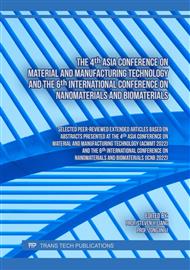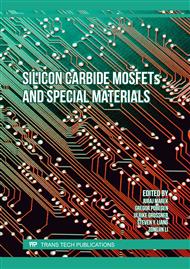p.39
p.45
p.55
p.61
p.67
p.75
p.81
p.93
p.101
Direct Ink Writing of Tubular Al2O3 Membrane Support Using Agar-Based Ink in 3D-Printing
Abstract:
Direct ink writing was used for 3D printing of tubular Al2O3 membrane support. Agar-based ink mixtures were prepared as a paste with a proper viscoelastic behavior in achieving printing. Using agar only for mixing with Al2O3 slurry in preparing the ink mixtures showed the flow behavior resulting in failure to print the Al2O3 tube due to too low viscosity of the ink mixture—100 Pa at 40°C. However, the introduction of Hydroxyethyl cellulose (HEC) as thickener and Polyethylene glycol 1500 (PEG 1500) as lubricant helped improve the behavior of the ink mixtures to be more proper paste for printing. The amounts of HEC were varied from 0 to 2wt% of solid loading. At 2wt% HEC, the ink mixture was able to be printed highest, compared to the other ink mixtures. However, the 2wt% HEC-using ink mixtures possessed the highest sintering shrinkage at 12%, while its relative density was highest at 70%. The results indicated that it was possible to print the alumina membrane tube if its fidelity was improved further.
Info:
Periodical:
Pages:
67-73
Citation:
Online since:
May 2023
Keywords:
Price:
Сopyright:
© 2023 Trans Tech Publications Ltd. All Rights Reserved
Share:
Citation:



